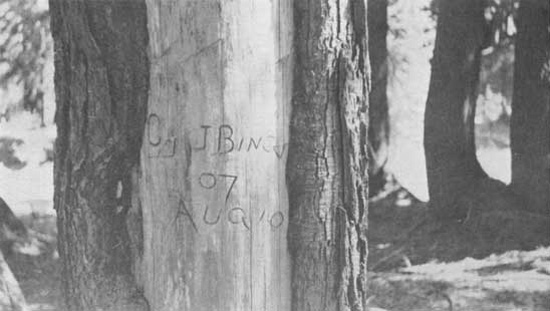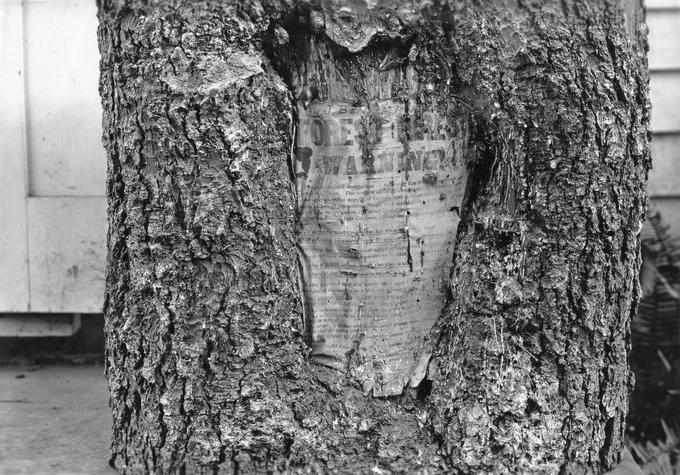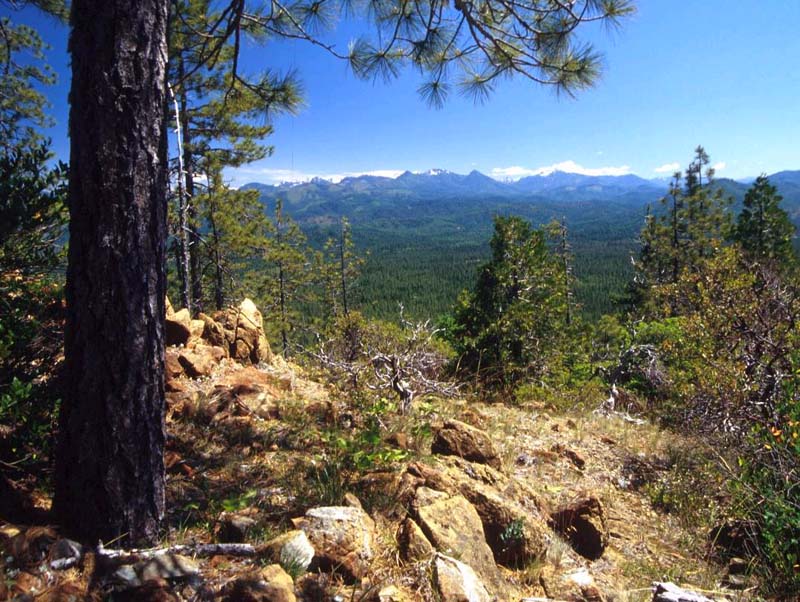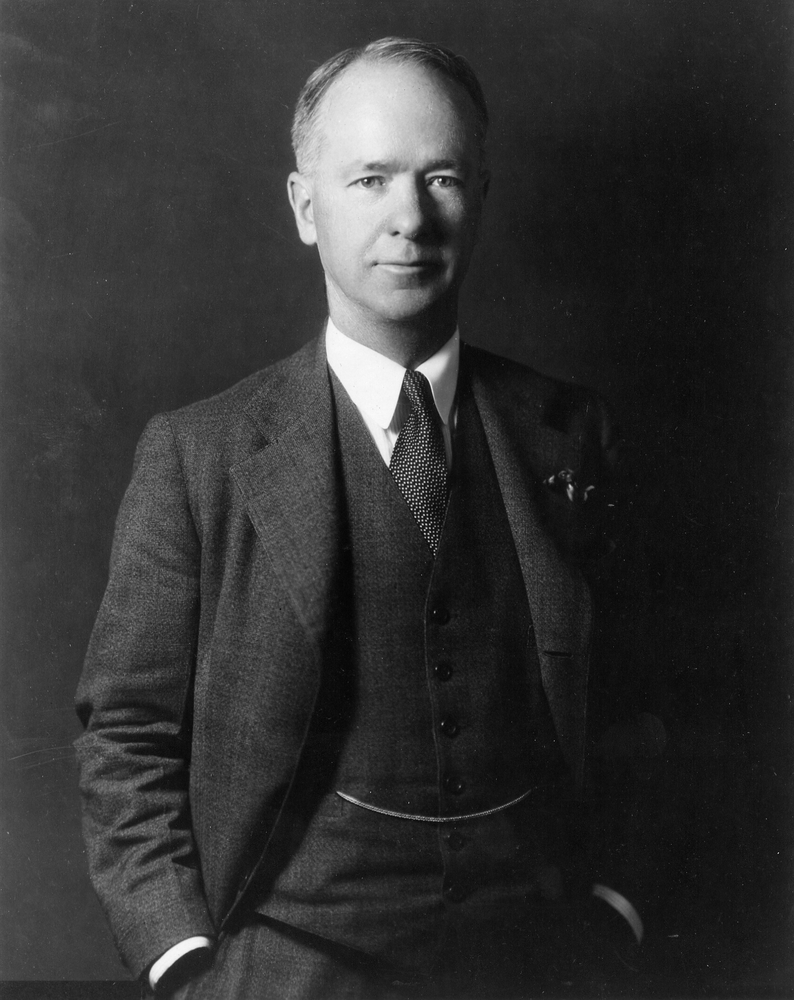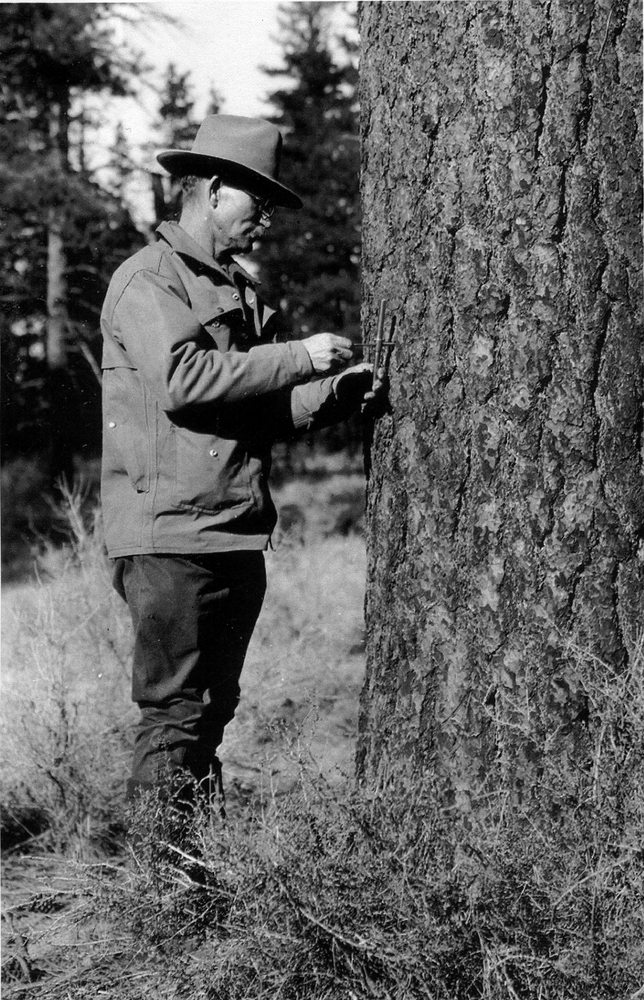Cyrus James “Cy” Bingham, an early U.S. forest ranger, served in Oregon’s Cascade Range from 1903 to 1920, the years when the forest reserves administered by the Department of the Interior were becoming national forests under the newly established U.S. Forest Service. A folk artist and poet, Bingham worked on lands that were later included in the Deschutes, Willamette, and Umpqua National Forests.
Born in 1870 in Oakland County, Michigan, Bingham was working as a cowboy in Asotin County, Washington, by the time he was twenty. He married Connie Boggan, and the couple moved to Idaho and southern Oregon, where he worked in mining. In 1900, the Binghams settled in Lane County, and Cy ran stamp mills—which crushed ore for processing—in the Bohemia Mining District.
In June 1903, the Department of the Interior hired Bingham as one of the first forest rangers in the Cascade Range Forest Reserve. A large and powerful man, he was reportedly the first to penetrate the high country to patrol the part of the reserve that stretched from the Three Sisters country in the north to Crater Lake in the south. As with many early rangers, Bingham lacked formal training in land management, but he had outdoor skills and an ability to persuade others.
As one of the few federal administrative officers assigned to the Cascade crest area, Bingham’s duties included detecting and suppressing forest fires, locating and constructing trails, and arbitrating grazing rights disputes between cattle ranchers and sheepherders. Bingham’s pay was $75 a month, out of which he paid for his own saddle and packhorses, tools, and food.
Connie and Cy Bingham spent the winters in McKenzie Bridge or Oakridge, and Connie often joined her husband in the mountains during the summer seasons. After two years of wearing the nickel-plated badge that identified him as a Forest Reserve Ranger, Bingham pinned on the bronze shield of the U.S. Forest Service to continue his work on the forest reserves, which were renamed national forests in 1907.
Aside from official government papers and his poetry, Bingham left few accounts of this service, except for the tree carvings that helped make him famous. The carvings, which documented his travels through the Cascades, included his name, title, date, and remarks on twenty or more trees. Known as Cy Bingham Trees, some can still be found in the woods, while others are preserved in museums. Bingham used the carvings, which were also used by some Native Americans and Basque sheepherders, to leave an enduring record of his presence and peregrinations.
In November 1907, Bingham was promoted to forest supervisor of the newly created Malheur National Forest and was transferred to its headquarters in John Day. He resigned from that post in 1920 and was elected sheriff of Grant County, where he served until 1932. He and Connie retired to California, where he died in Pomona in 1937.
-
![]()
A Cy Bingham tree at House Rock Meadows on the Skyline Trail.
Courtesy U.S. Forest Service
-
![]()
Cy Bingham in front of his Forest Service cabin in about 1910.
Courtesy U.S. Forest Service
-
![]()
Cy Bingham.
Courtesy U.S. Forest Service
-
![]()
A fire warning posted by Cy Bingham on August 21, 1903, at Box Canyon.
Photo by Ernest Lindsey. Courtesy Oregon State University Libraries, Gerald Williams coll.
Related Entries
-
Forest Service Radio Lab
The Forest Service Radio Laboratory (FSRL)—located in Portland from 193…
-
![George W. Peavy (1869-1951)]()
George W. Peavy (1869-1951)
George Wilcox Peavy was dean of the School of Forestry at Oregon State …
-
![Henry Haefner (1884-1980)]()
Henry Haefner (1884-1980)
Henry Haefner was an early forester and oral historian in the Siskiyou …
-
![National Forests in Oregon, 1892 to 1933]()
National Forests in Oregon, 1892 to 1933
The first forest reserves in the state were established in 1892-1893, a…
-
![Siskiyou National Forest]()
Siskiyou National Forest
The Siskiyou Forest Reserve was created on March 2, 1907; within two da…
-
Thornton Munger (1883-1975)
Thornton Taft Munger was the first director of the U.S. Forest Service'…
-
Walter Perry (1873-1959)
Walter Julian Perry arrived in Bend, Oregon, on New Year's Day 1925. He…
Related Historical Records
Map This on the Oregon History WayFinder
The Oregon History Wayfinder is an interactive map that identifies significant places, people, and events in Oregon history.
Further Reading
Cox, Robert. Blazes on the Skyline. Eugene, Ore.: Pacific House Books, 1988.
Newman, Doug. “Book examines life of early ranger.” Eugene Register-Guard, June 5, 1988.
Preso, Tim. “Pioneer Ranger Leaves a Legacy Carved on Oregon Trees.” The Seattle Times, Friday, November 23, 1990.
Rakestraw, Lawrence, and Mary Rakestraw. History of the Willamette National Forest. Eugene, Ore.: U.S. Forest Service, Willamette National Forest, 1991.

